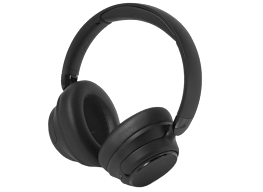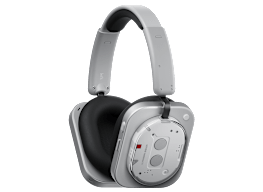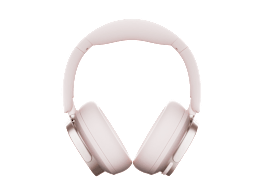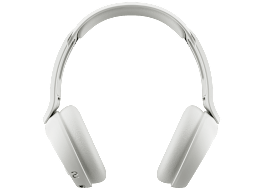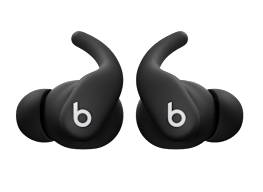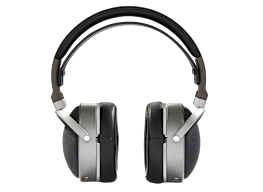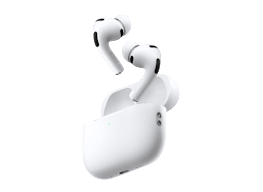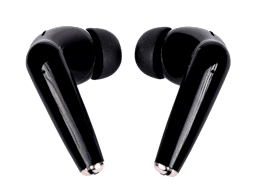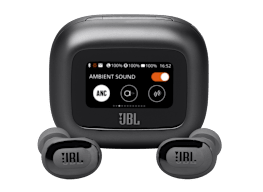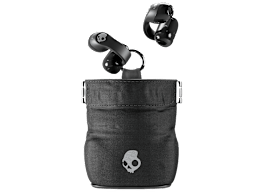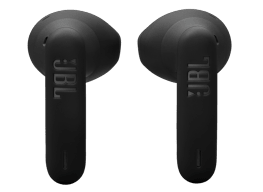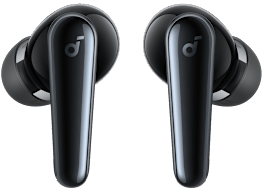
Headphone Buying Guide

Senior Home & Tech Writer
Most of us are tethered to our devices for at least part of the day, listening to music on the go, watching videos, or joining in on video calls with friends or colleagues. Headphones are more than an accessory—they’re practically an extension of ourselves.
If you’ve spent years listening to the same cheap pair you bought at a convenience store, it might be time to consider an upgrade. There are plenty of choices, from tiny, in-ear models that will slip into a pocket to big, over-the-ear cans that can help immerse you in high-fidelity sound. And though Bluetooth is the go-to for a lot people, there are still reasons to consider buying a wired pair.
Consumer Reports currently has more than 220 models in our ratings. They are all tested for sound quality, along with a variety of other characteristics. When it comes to choosing the best headphones, a lot of personal choice is involved—pure audio quality is important to most people, and budget, convenience, comfort, and various features matter, too.
In Your Ears or on Your Head?
Your choice of headphones is as much about your lifestyle as it is about your wallet. Some people buy different types for different uses—one, say, for working out and another for relaxing at home or hopping on a video conference—but there aren’t any rules about how you should use yours. You see people exercising with big, over-ear cans, and some people are attached to their earbuds 24/7, even when they’re watching movies on their laptops.
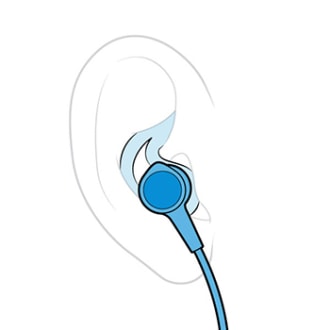
Smaller: When Portability Is Paramount
All headphones are technically “portable,” but we use the term to describe small, lightweight models, most of which sit inside the ear and can be tucked away in a pocket or purse. Some people find smaller, lighter headphones to be more comfortable and more convenient.
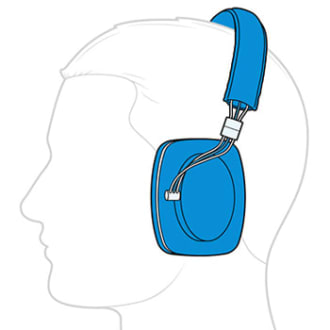
Larger: Where Sound Reigns Supreme
We use the term “home/studio style” for the larger headphones that sit on or over the ears, with two ear cups connected by an adjustable headband. Some fold for storage and come with carrying pouches. They’re bulkier, but some people prefer not to have their ears plugged up.
Tips on Finding the Right Pair for You
Evaluate Sound Quality
Like speakers, headphones can emphasize (or distort) different parts of the audio spectrum, and you might prefer one sound over another. If you can, try headphones before buying. If you buy online, check return policies to make sure your purchase can be returned or exchanged for another model.
Choose a Design That Fits Your Expected Use
Over-the-ear models are great for listening at home but could get in the way while you’re on the go. Sometimes smaller, more portable models sacrifice a little sound quality, but they are definitely handy, and in-ear headphones are easier to manage. If you need some peace and quiet working at home or in other environments, consider headphones with active noise cancellation technology.
For the Best Sound, Stick With a Wire
For serious music listening, we recommend one of the better-rated wired models. We find that many wireless headphones work well, too, and some have excellent sound, but so far we haven’t found any that provide the sonic clarity of the best corded models. (On the other hand, you can find excellent sound quality in some wireless headphones—even true wireless models. You might have to pay more, though.)
Types: A Pair for Every Ear
There’s a variety of styles and features to choose from, and there’s no one-size-fits all solution. Some people love earbuds or other styles of in-ear headphones, while others have a hard time getting the right fit or just find them irritating. Over- and on-ear models can be great depending on where you plan to use them, but some users balk at their size or complain that they interfere with eyeglasses or earrings. You’ll also need to choose between wireless and wired pairs, and you may want to consider features like noise cancellation, or go in the opposite direction with an open-backed pair. Use this guide to help you find the type that suits your specific needs.
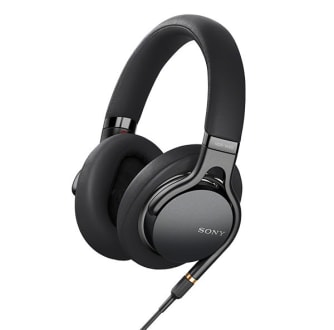
Over/On-Ear Headphones
Choosing between an on-ear and over-ear pair is partly a matter of comfort. Models that press on your ears are usually lighter, but the pressure is unpleasant for some. Both designs come in two key styles. Closed-back models have sealed ear cups, which keep in more sound and muffle outside noise. Open-back headphones, which are less common, have openings in the ear cups. That’s intended to give the audio a clearer, more natural feel, but they let in more external sound and noise can bleed out—which can bother other people.
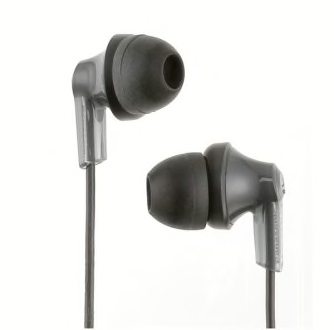
Earbuds
“Earbuds” is the term most people use for any in-ear model, but there are actually a variety of styles that get roped in under that name. They’ve become essential tools for smartphones and daily companions for millions of people. We rate any smaller model that doesn’t fit on or over-the-ears in this category. Some sit in the bowl of the ear, while other insert-style models plug up the ear canal, which can form a tighter seal to help block outside sound. Many insert-style pairs come with additional earpieces, or tips, of varying sizes to get a good fit.
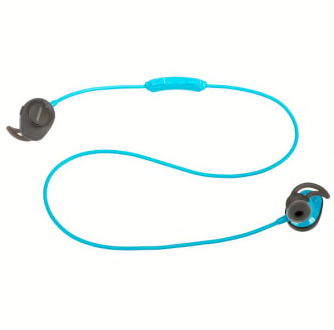
Wireless Headphones
Wireless models are common and typically use Bluetooth, which has a range of up to 30 feet or so, to connect to smartphones, laptops, and even some TVs. Once a novelty, wireless models became indispensable in recent years, when many phone manufacturers abandoned the headphone jack. They come with a variety of features, from compatibility with Alexa and other digital assistants to ambient sound monitoring modes, which let in noise from your environment on purpose so that you can keep an ear on your surroundings.
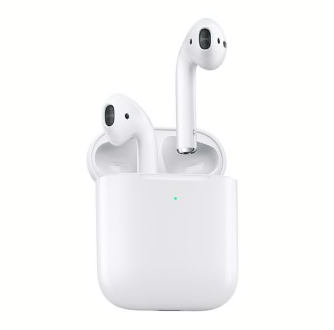
True Wireless Earbuds
True wireless is the term for headphones that don’t have a cord or a cable connecting the earpieces. They’re the ultimate when it comes to portability, and they’ve become the most widely sold style of headphones on the market. The technology has improved over the years, with better sound and more options at lower prices. They come with a carrying case that doubles as a portable charger. When you’re shopping for a true wireless model, consider battery life and how many times the case will refuel the headphones on the go before it needs to be plugged in again.
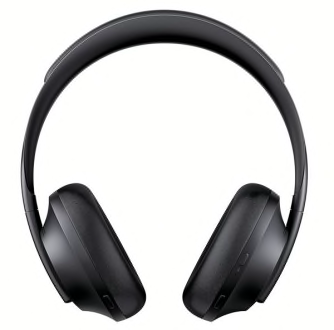
Noise-Canceling Headphones
A lot of headphones are designed to seal off your ears and physically muffle outside sound. Active noise-canceling models go further. These headphones use tiny microphones to monitor the frequencies of outside noise, then produce those same frequencies out of phase in an effort to block them. When it works well, that cancels out external sound before it gets to your ears. These headphones tend to be pricier, but recently we’ve seen some great less expensive pairs. Noise cancellation is available in both over/on-ear models and earbuds.
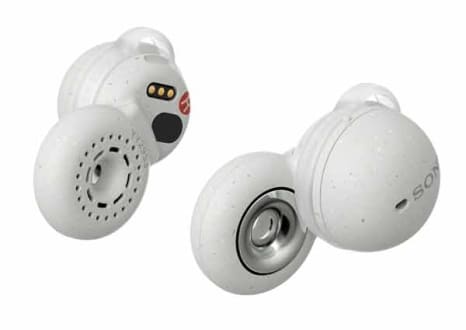
Open-Back Earbuds
This new style of headphones is becoming more popular, with pairs from leading brands including Sony and Bose. Unlike noise-canceling models, they’re designed to let in as much outside sound as possible. Some sit on the ear without plugging it up, while others have holes to let sound pass through. That’s probably useless in noisy spaces, but it could be ideal in situations such as exercising outside. Alternatively, some headphones have an ambient sound mode that pipes in outside noise through active microphones, which could be a more versatile solution.
How to Save Money on Your Next Pair
There are a lot of ways you can cut down on the money you’re spending on headphones. First and foremost, look past brand names and don’t assume more expensive models are better.
We’ve found that quality and performance can vary dramatically across different models made by the same manufacturer. And many of the top-scoring models in our ratings come from lesser-known companies at prices that can be hundreds of dollars less than competing products.
Another way to save is to try a refurbished pair. Big retailers such as Amazon, Best Buy, and Walmart often sell refurbished headphones. They may have needed repairs or might have simply been cleaned up after being returned for other reasons. Refurbished products don’t always come in their original packaging, but you can score big discounts on popular and well-rated models. Check the return policy, but the retailers we’ve looked at generally offer a warranty.
You may also want to consider headphone repair before you buy a new set. Not all problems can be fixed for a reasonable price, but if you’ve shelled out big bucks for a set of headphones, it’s worth a look. When we checked, commonplace repairs ranged from as little as $30 to around $70. Check out our guide to headphone repair for details.
Lastly, take some steps now to keep your current headphones in shape. If you do it right, regular cleaning can keep your headphones working for months or even years longer than they might otherwise.
Will Your Headphones Break?
Your next pair of headphones shouldn’t just sound great; they should be built to last, too.
That’s why we conduct annual member surveys, to get a picture of how well headphones fare in the real world and how satisfied owners are with them. In our most recent headphones survey, more than 18,600 of our members told us about their experiences with more than 22,200 headphones purchased over the past five years.
Our predicted reliability ratings use the data from our surveys to estimate how new models from a particular brand will hold up over the first two years of ownership.
We also assign each brand an owner satisfaction rating, based on the percentage of our members who are extremely likely to recommend the product to friends and family.
You can see a full breakdown of our assessment of predicted reliability and owner satisfaction in our headphones ratings.
How We Test Audio Quality
Every year, CR tests dozens of headphones in our labs. A panel of trained audio technicians assesses each pair by listening to the same set of high-quality music recordings. These tracks were selected to highlight different parts of the audio spectrum—think of a more specific version of bass, midrange, and treble. Other tracks are used to test different kinds of sounds, such as the spatial ambience of the room the music was recorded in, the delicate nuances of the human voice, and audio passages crowded with tons of different instruments.
We use the same songs to compare the model we’re testing with a standard set of reference headphones that represent different levels of audio quality, a range of Excellent to Poor in our ratings. That gives us a clear, consistent picture of how each headphone measures up.
Personal preferences will influence your feelings about what makes for great audio quality. For example, some listeners want the guttural hit of a loud bass note above all else, while others prefer a more clinical sound that lets you pick out all the fine details. At CR we privilege “accuracy” in audio products, or how well the headphones reproduce the sound of an original recording. In other words, the better a pair of headphones rates in our tests, the closer it’s going to get you to what the producers created in the studio, with the fewest distortions and sonic quirks.
Buying Guide Video
Watch our video below for more.
Headphone Brands
Apple sells headphones to accompany its iPhones, computers, and other devices. Among these offerings are AirPods, true wireless headphones that don’t have a wire connecting the two buds. Apple has also owned headphone maker Beats since 2014.
Bose is practically synonymous with over-ear noise-canceling headphones, but the company makes a range of products with various styles and features. Products are usually higher-priced.
Grado, a manufacturer based in Brooklyn, N.Y., is known for handmade headphones geared toward audiophiles. The company’s products tend to be high-end, but it has a number of midpriced options and also makes Bluetooth models.
JBL by Harman has a long history, and the company is now owned by Samsung. It makes midpriced to moderately expensive headphones in a variety of styles.
Monoprice is a budget electronics manufacturer that has expanded into headphones. Its products tend to be inexpensive, and its headphones often punch well above their weight in our tests.
Samsung, a powerhouse electronics brand in a number of categories, entered the headphone business in 2012. The company offers in-ear and home/studio-style models.
Founded in 1945, Sennheiser is a respected professional audio brand that also offers a wide assortment of consumer headphones. Prices tend to be in the midpriced to higher-end range.
Skullcandy earned a following with headphone lines that feature trendy designs targeting a younger demographic. The company’s models cover a variety of prices.
Sony is a leading brand in the headphone market. It covers all types and styles, in all price ranges, with wide distribution.
















